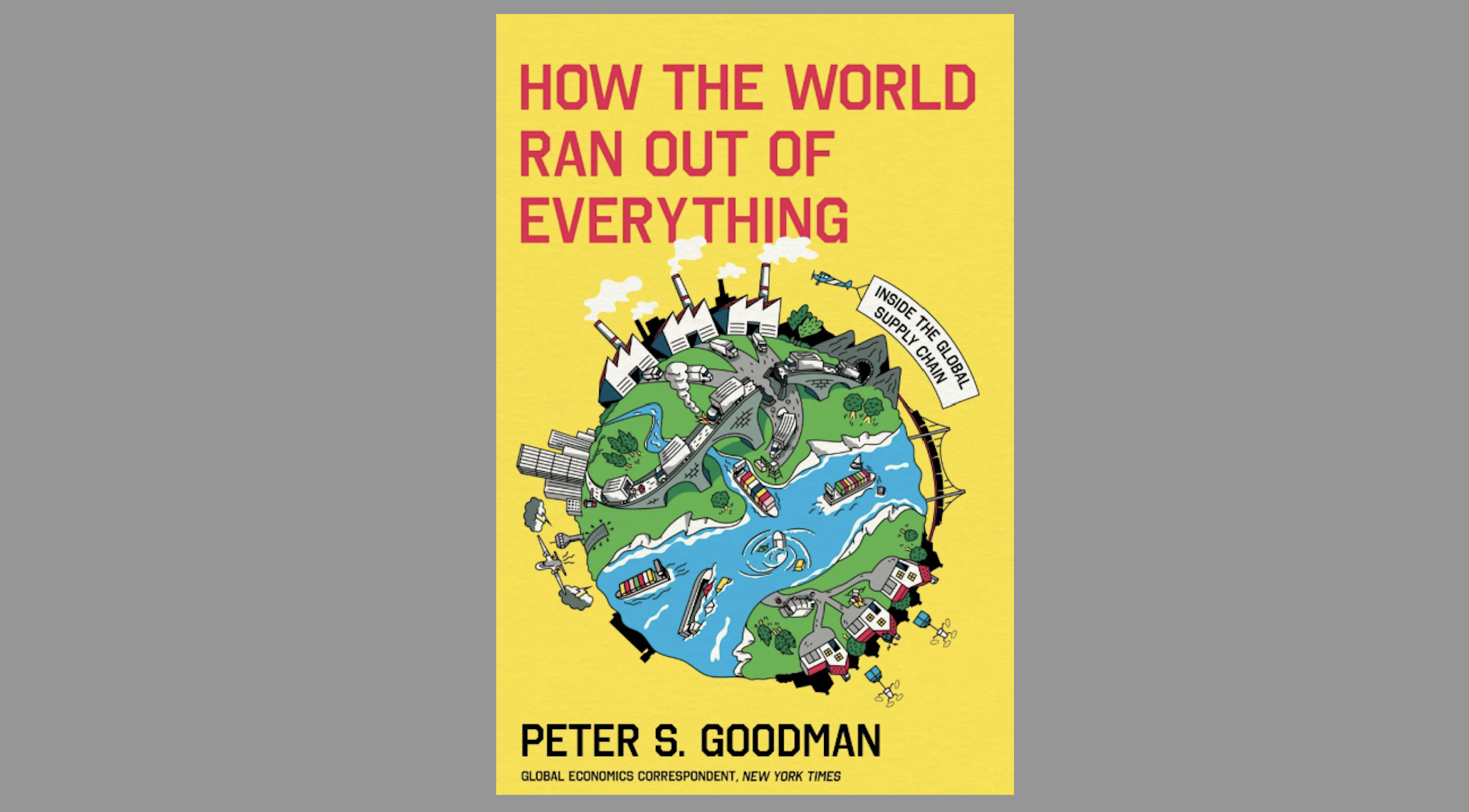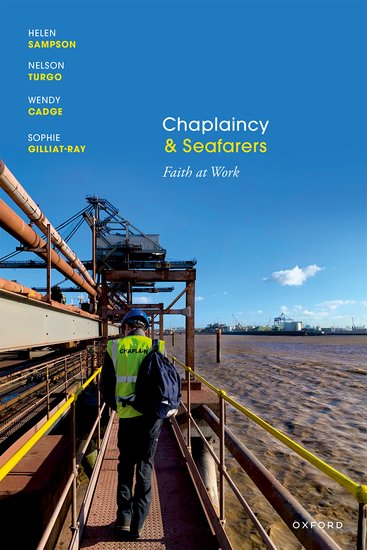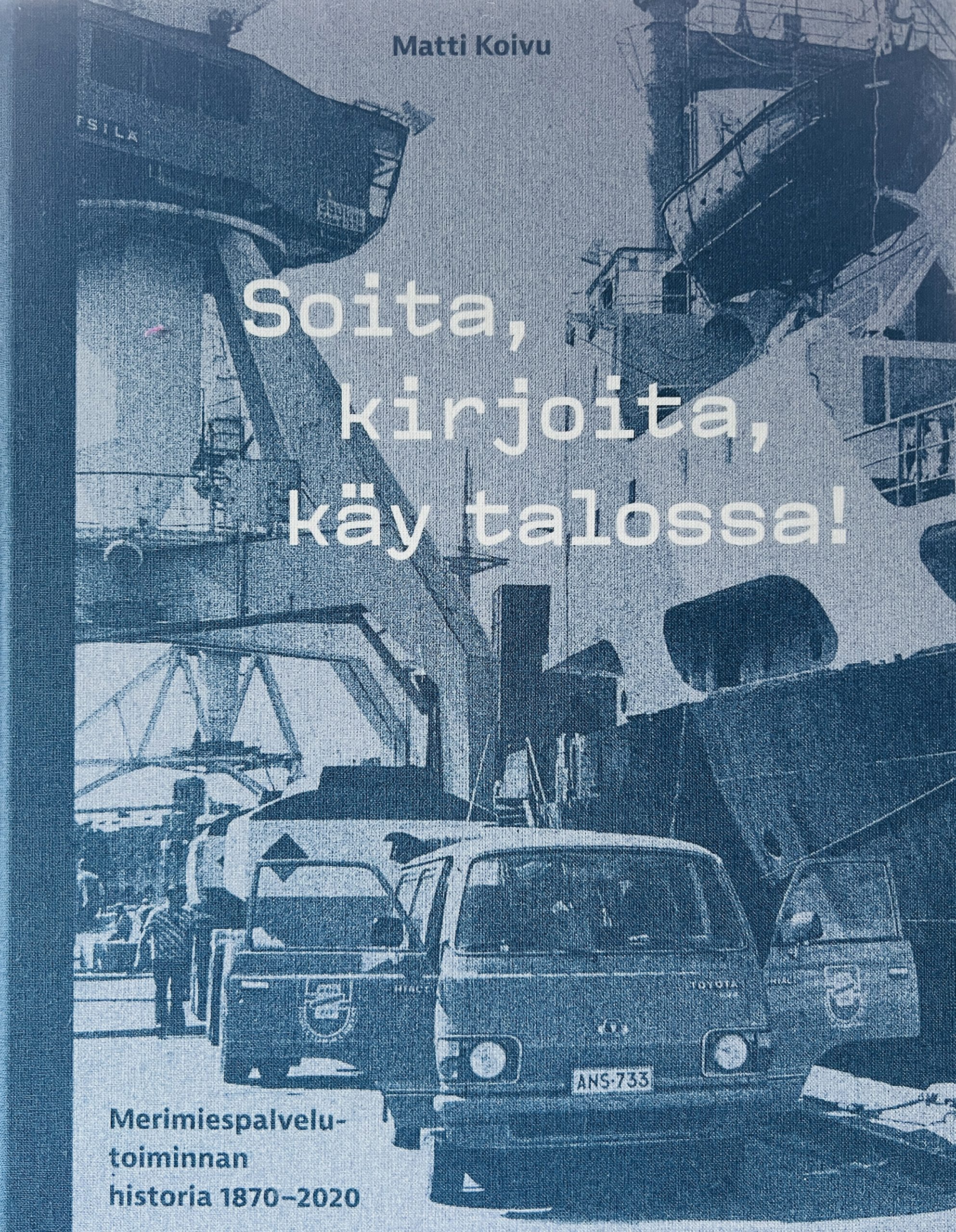Book Review of How the World Ran Out of Everything: Inside the Global Supply Chain by Peter S. Goodman (HarperCollins, 2024).
Peter S. Goodman, global economics correspondent for The New York Times, offers a revealing exploration of the fragile and exploitative global supply chain in his 2024 book How the World Ran Out of Everything: Inside the Global Supply Chain. Written in the aftermath of the COVID-19 pandemic, Goodman’s book takes readers on a journey into the inner workings of the system responsible for moving goods across the globe—a system that proved alarmingly vulnerable during the pandemic-induced supply chain crisis.
The book is divided into three parts: “The Great Supply Chain Disruption,” “Across the Water,” and “Globalization Comes Home.” Each section unpacks a critical element of how goods travel from their origin to the consumer, using the production and delivery of a single product—a glow-in-the-dark bath toy called Glo—as a case study. By tracing Glo’s journey from its Chinese factory to American households during the chaotic 2021 holiday season, Goodman sheds light on the myriad challenges facing the global supply chain and its reliance on efficiency at the expense of resilience and worker welfare.
Goodman’s investigation highlights what he finds to be labor exploitation embedded within the global supply chain. In his view, the pandemic was not just a disruption but a dramatic exposure of systemic flaws caused by decades of prioritizing cost-cutting and shareholder returns over sustainability and equity. Goodman asserts, “The answer, as I’ve come to understand it, was nothing less than the breakdown of globalization.” This breakdown, as he elaborates, revealed how workers across industries were subjected to dangerous, underpaid, and dehumanizing conditions to maintain the illusion of efficiency. From truck drivers to port workers to seafarers, Goodman reveals the hidden human cost of getting goods to consumers.
One of the book’s central critiques is directed at the “just-in-time” manufacturing model, which prioritizes minimizing inventory to reduce costs. Goodman explains, “The globalization to which we have become accustomed was propelled by an especially intoxicating form of efficiency, a concept known as just-in-time, or lean manufacturing.” While this model lowered costs and improved profits for the “investor class,” it left the global supply chain precariously vulnerable to disruptions. The author vividly describes how this relentless pursuit of efficiency led to a fragile, profit-driven system that seemed to treat workers’ time and well-being as expendable.
The first part of the book delves into why American companies, like the one producing the Glo toy, outsource manufacturing to countries like China. Goodman dissects the rhetoric of economic competition, arguing that it is not foreign nations but corporate executives who have undermined American manufacturing by prioritizing profits over middle-class wages. Goodman writes, “It was not China that was ransacking American sustenance. If a crime had been committed, it was an inside job.” Goodman contends that corporate greed, rather than external competition, drove the rise of offshore manufacturing. He frequently points to the role of the “investor class” in perpetuating this exploitative system, emphasizing their preference for short-term profits over long-term resilience.
Goodman also traces the historical roots of this system, connecting the adoption of just-in-time manufacturing practices to the broader deregulation of industries. He critiques the consulting firms, such as McKinsey & Company, that championed these practices, accusing them of shifting financial risks onto workers while enriching executives. He notes, “The lowest price frequently trumped all other considerations, and making products in China was generally the best way to deliver lower prices.” This race to the bottom in pricing, however, came at a significant human cost.
The book’s second section, “Across the Water,” examines the transportation of goods, focusing on the critical role of seafarers, ports, and truck drivers. Goodman describes the struggles of seafarers stuck aboard ships during the pandemic, unable to disembark for months due to quarantine restrictions. These workers endured isolation, poor working conditions, and limited communication with their families. Similarly, Goodman highlights the plight of port workers and truck drivers, who faced grueling schedules, low pay, and precarious employment. He describes how containerization, a technological breakthrough scaled by Malcolm McLean, revolutionized shipping but also introduced new challenges, such as gridlocked ports and exploited labor.
Goodman’s discussion of organized labor is particularly notable. He appreciates unions like the International Longshore and Warehouse Union (ILWU) for securing fair wages and benefits for their members, contrasting their success with the struggles of other supply chain workers. However, he also critiques the systemic failure to support workers across the board, noting the widespread exploitation of short-haul truck drivers, railroad workers, and others.
In the final section, “Globalization Comes Home,” Goodman reflects on the shifting dynamics of global trade. He discusses efforts to diversify supply chains by moving manufacturing to countries like Vietnam and Mexico. However, he argues that these changes do not signify the end of globalization but rather a reconfiguration of its hubs. He writes, “Globalization is not really ending. The merits of international trade remained unimpeachable for the simple reason that no part of the planet was anywhere close to self-sufficiency.” Goodman emphasizes that the underlying issues of labor exploitation and corporate concentration remain unresolved, regardless of where goods are produced.
Goodman concludes with a call for systemic change, advocating for stronger labor protections, regulatory oversight, and a shift away from profit-driven decision-making. He writes, “The ultimate solution to the upheaval in the supply chain is the resumption of sensible regulations that promote competition and allow workers to bargain for their share of the proceeds.” He argues that addressing these issues is essential not only for the stability of the supply chain but also for the well-being of the workers who keep it running.
As a publication with an interest in seafarers’ welfare, we found Goodman’s insights particularly relevant. His exploration of the human cost of the supply chain resonated deeply, shedding light on the challenges faced by seafarers, port workers, and truck drivers alike. The book effectively underscores the interconnectedness of these roles, illustrating how the struggles of one group ripple across the entire system.
A powerful theme throughout the book is the profound impact the supply chain has on workers’ families. Goodman vividly portrays how the relentless demands of the industry strain personal relationships, often leaving workers isolated and disconnected from their loved ones. Seafarers, for instance, spend months at sea, missing milestones like anniversaries, birthdays, and graduations. Similarly, truck drivers face unpredictable schedules and long periods away from home, often leading to strained marriages and broken family bonds. Goodman captures the deep emotional toll of this lifestyle, quoting one worker who noted, “To have a successful family, you have to have a wife who’s very understanding. If not, you ain’t going to be married long.” This insight resonates beyond individual professions, highlighting how systemic pressures on workers reverberate through their personal lives, affecting not only their own well-being but also the stability of their families. It’s a sobering reminder of the hidden cost of efficiency-driven systems and a call to consider the human dimension in any discussion of the global supply chain.
The MARE Report





